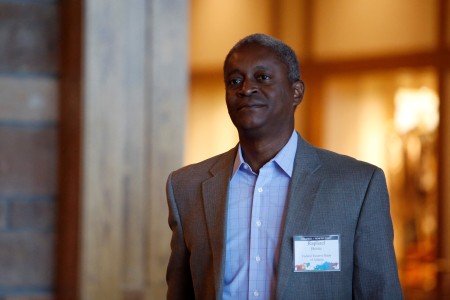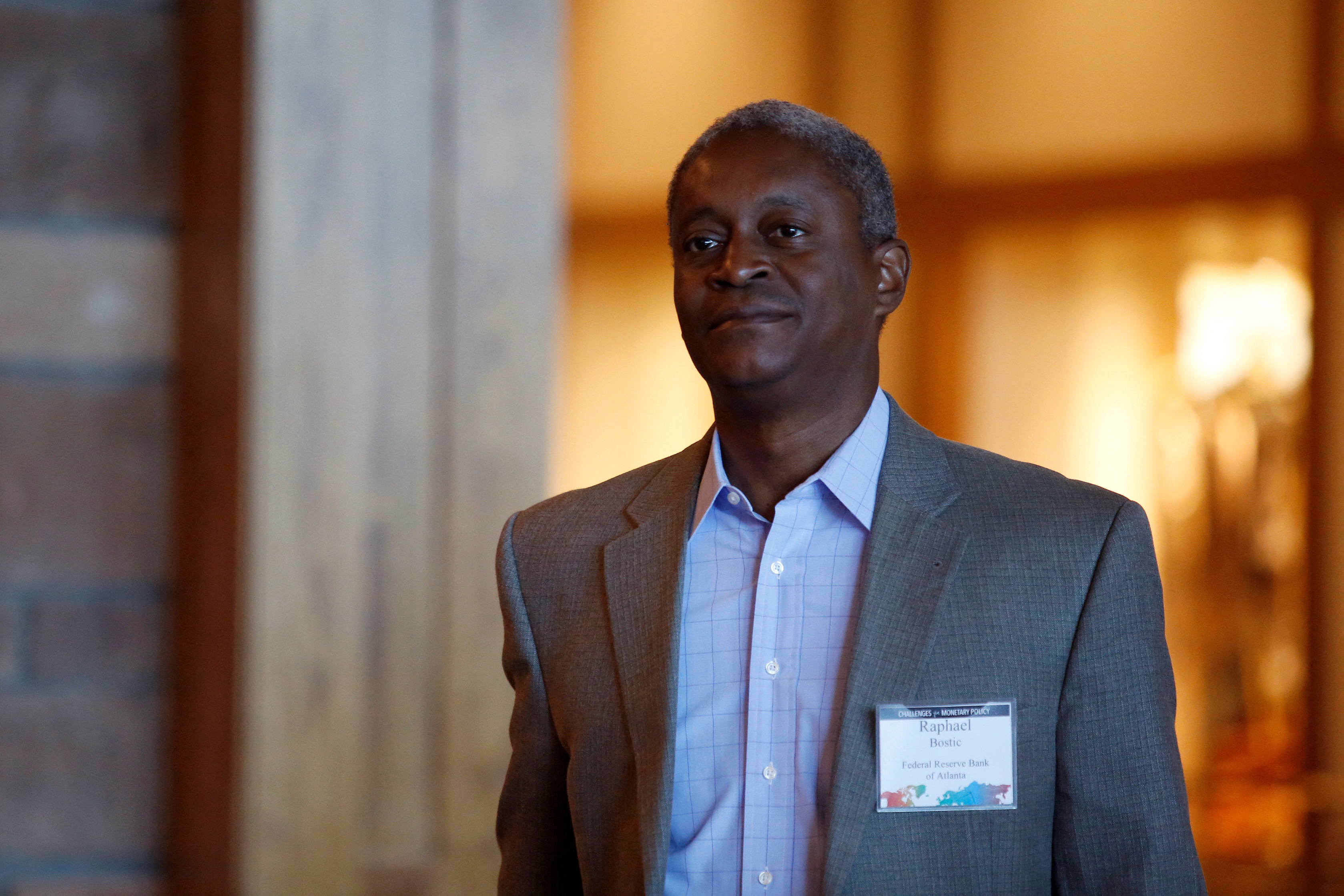(Reuters) -Atlanta Federal Reserve President Raphael Bostic on Tuesday said recent economic data has made him “more confident” the U.S. central bank can get inflation back to its 2% target, but he wants to see “a little more data” before he’s ready to support lowering interest rates.
Bostic, speaking at an event in Atlanta, noted that the balance of risks between inflation and the job market are closer to level, but he wants to be sure the Fed avoids cutting rates too soon, only to have to raise rates later if inflation reaccelerates.
Still, if the economy evolves as he expects, rates would be lower by the end of this year. “I am willing to wait, but it’s coming … It is coming,” Bostic said.
Financial markets broadly expect the Fed to cut interest rates at its Sept. 17-18 meeting, which would mark its first such move in this policy cycle. The central bank began raising its benchmark overnight lending rate in March 2022, pushing it from the near-zero level to the current 5.25%-5.50% range. It has remained at that level since July 2023.
Inflation began this year stronger than expected and spurred policymakers like Bostic to shift their expectations for how soon rate cuts could begin. Inflation data has improved in the last few months, however, and employment data has softened somewhat, with job creation slowing and the unemployment rate rising to a post-pandemic high of 4.3% last month.
The weaker-than-expected jobs data for July has prompted investors in interest rate futures contracts to boost bets the Fed will start cutting borrowing costs next month with a bigger-than-usual 50-basis-point reduction to about an even odds probability.
Other Fed officials, like Bostic, have pushed back against the notion that the economy is coming off the rails, but also warned that the central bank will need to cut rates to avoid such an outcome.
Bostic’s remarks about a rate cut coming later this year was less definitive than his most recent comments in June on the timing for a first rate cut. At that time he said he expected a single quarter-percentage-point cut in the fourth quarter.
While the balance of risks between inflation and employment are evening out, Bostic said although the job market remains strong, the Fed wants to be sure a hot job market doesn’t turn suddenly to a “freezing cold” one.
(Reporting by Lindsay Dunsmuir and Dan Burns; Editing by Paul Simao)


